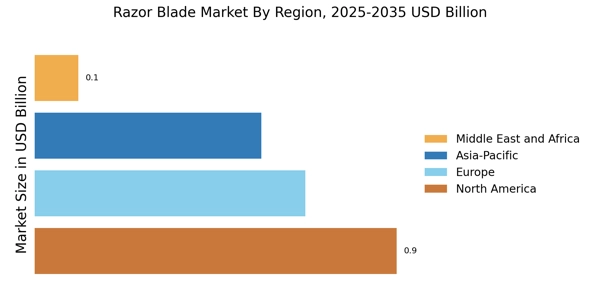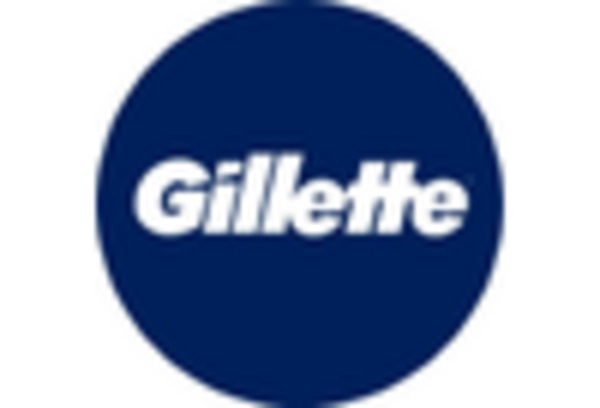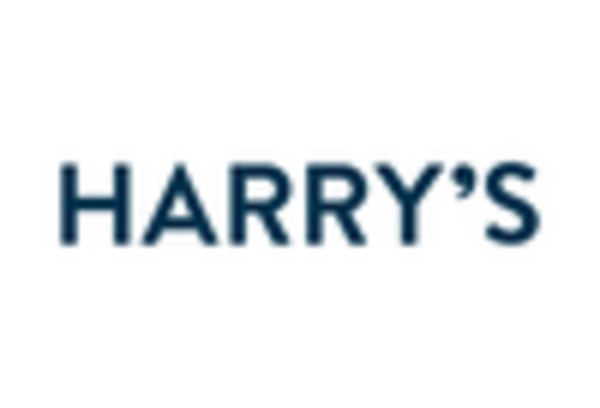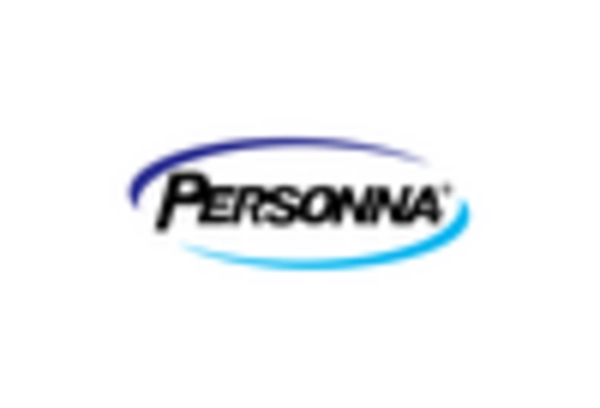Focus on Health and Hygiene
The Razor Blade Market is positively impacted by the growing focus on health and hygiene among consumers. As awareness of personal hygiene increases, the demand for quality shaving products rises correspondingly. Consumers are more inclined to invest in high-quality razors that promise safety and effectiveness, which is reflected in market data showing a steady increase in sales of premium razor blades. This trend is further supported by the rising popularity of grooming products that emphasize skin health, such as moisturizing blades and hypoallergenic options. As a result, the Razor Blade Market is likely to continue benefiting from this heightened emphasis on health and hygiene, driving innovation and product development.
Rising Female Grooming Trends
The Razor Blade Market is also experiencing growth due to the rising trends in female grooming. Women are increasingly adopting shaving as a part of their personal care routines, leading to a diversification of products tailored specifically for female consumers. Market data reveals that the female segment of the shaving market is expanding, with projections indicating a growth rate of approximately 6% in the coming years. This shift prompts manufacturers to develop products that cater to the unique needs of women, such as ergonomically designed razors and specialized blade formulations. Consequently, the Razor Blade Market is adapting to meet the demands of this evolving consumer base.
Innovations in Blade Technology
Technological advancements play a crucial role in shaping the Razor Blade Market. Innovations in blade design, such as the introduction of multi-blade systems and improved materials, enhance the shaving experience by providing a closer and more comfortable shave. Market data indicates that products featuring advanced technology are gaining traction, with consumers willing to pay a premium for superior performance. This trend is likely to continue as manufacturers invest in research and development to create blades that minimize irritation and maximize efficiency. As a result, the Razor Blade Market is expected to witness a shift towards high-tech products, appealing to a more discerning consumer base.
Expansion of E-commerce Platforms
The Razor Blade Market is significantly influenced by the expansion of e-commerce platforms. As consumers increasingly prefer online shopping for convenience, the accessibility of razor blades through various digital channels has improved. Market data suggests that e-commerce sales in the personal care sector, including shaving products, have seen a substantial increase, with estimates indicating a growth rate of around 15% annually. This trend allows consumers to explore a wider range of products, including niche and premium brands that may not be available in physical stores. The rise of subscription services further complements this trend, providing consumers with regular deliveries of their preferred razor blades, thus enhancing customer loyalty and driving sales in the Razor Blade Market.
Increasing Male Grooming Awareness
The Razor Blade Market experiences a notable surge in demand due to the increasing awareness surrounding male grooming. As societal norms evolve, more men are embracing personal grooming routines, which includes regular shaving. This shift is reflected in market data, indicating that the male grooming segment is projected to grow at a compound annual growth rate of approximately 5% over the next few years. The rise in grooming awareness is not limited to traditional shaving methods; it also encompasses the adoption of advanced razor technologies. Consequently, brands are innovating to cater to this expanding demographic, thereby driving growth within the Razor Blade Market.


















Leave a Comment